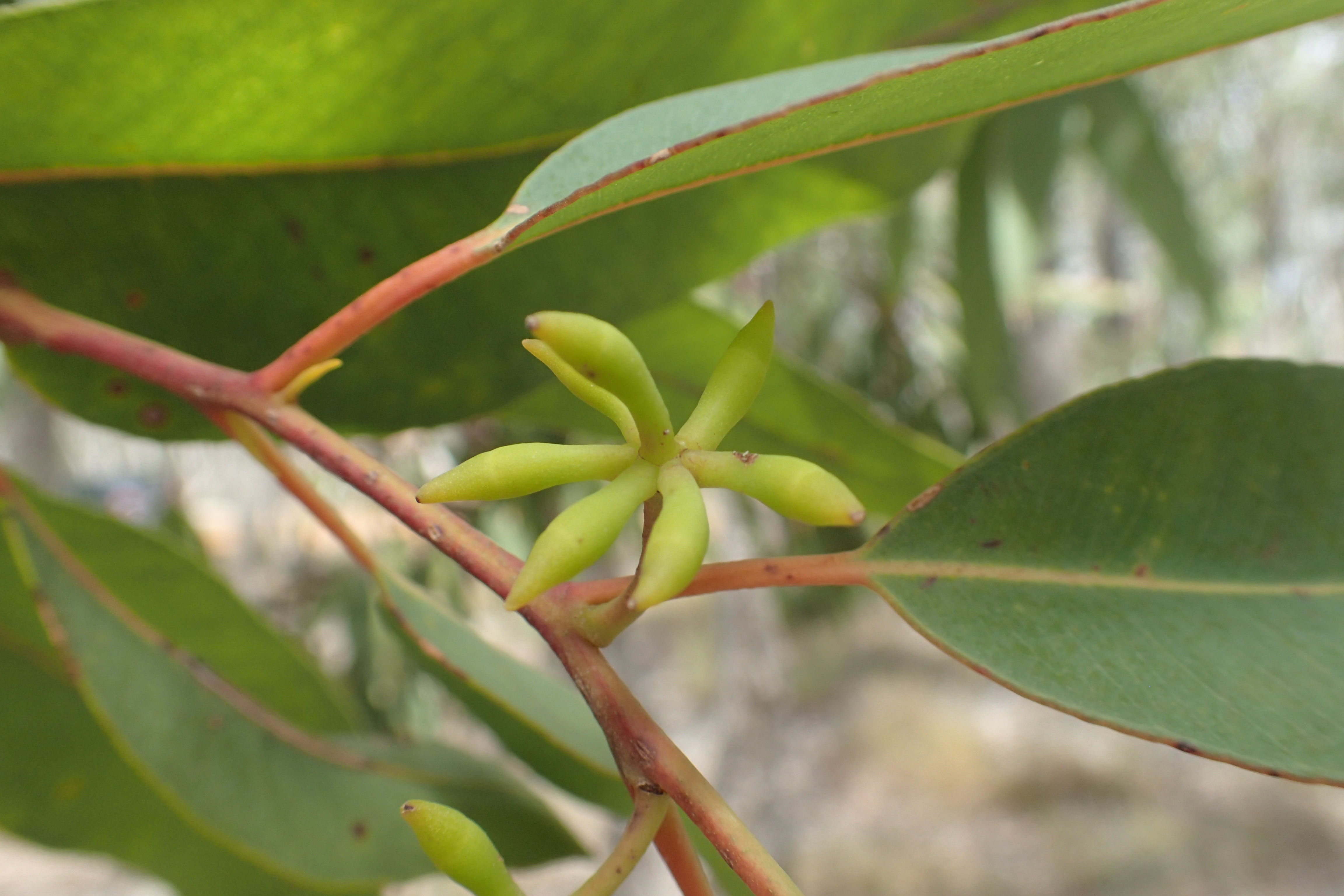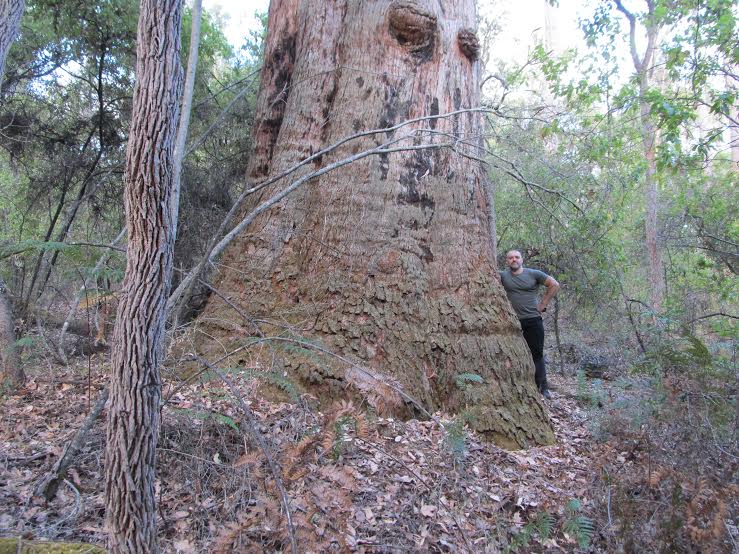Eucalyptus patens on:
[Wikipedia]
[Google]
[Amazon]



 ''Eucalyptus patens'', commonly known as yarri or blackbutt, is a species of flowering plant in the family
''Eucalyptus patens'', commonly known as yarri or blackbutt, is a species of flowering plant in the family
Image:Eucalyptus patens from "Eucalyptographia. A descriptive atlas of the eucalypts of Australia and the adjoining islands"; (1879) (20165942804).jpg, Details of ''Eucalyptus patens'' from ''Eucalyptographia. A descriptive atlas'' (1879)
Image:Yarri in Primer of Forestry Poole 1922.png, Yarri with man at left, c. 1922
Photo of tree at ANH database
Photo of flower at ANH database
{{Taxonbar, from=Q5405668 Myrtales of Australia patens Eucalypts of Western Australia Trees of Australia Trees of Mediterranean climate Plants described in 1867 Taxa named by George Bentham Endemic flora of Southwest Australia



 ''Eucalyptus patens'', commonly known as yarri or blackbutt, is a species of flowering plant in the family
''Eucalyptus patens'', commonly known as yarri or blackbutt, is a species of flowering plant in the family Myrtaceae
Myrtaceae, the myrtle family, is a family of dicotyledonous plants placed within the order Myrtales. Myrtle, pōhutukawa, bay rum tree, clove, guava, acca (feijoa), allspice, and eucalyptus are some notable members of this group. All speci ...
and is endemic
Endemism is the state of a species being found in a single defined geographic location, such as an island, state, nation, country or other defined zone; organisms that are indigenous to a place are not endemic to it if they are also found elsew ...
to the south-west
The points of the compass are a set of horizontal, radially arrayed compass directions (or azimuths) used in navigation and cartography. A compass rose is primarily composed of four cardinal directions—north, east, south, and west—each se ...
of Western Australia
Western Australia (commonly abbreviated as WA) is a state of Australia occupying the western percent of the land area of Australia excluding external territories. It is bounded by the Indian Ocean to the north and west, the Southern Ocean to th ...
. It has rough bark on the trunk and branches, lance-shaped leaves, creamy-white flowers and spherical to oval fruit.
Description
''Eucalyptus patens'' is a tree that may grow to a height of with a dbh of but is a smaller tree or mallee on less favourable sites. The thick, corky, friable bark has a rough texture and is deeply longitudinally furrowed. It is grey on the outside with a yellow tinge on the inside surface. The dull bluish green adult leaves are arranged alternately. The leaf blade is lance-shaped, sometimes curved, tapers to a fine point and is typically long and wide on a flat or channelled petiole long. The flower buds are arranged in leaf axils in groups of between seven and eleven on an unbranched peduncle long, the individual buds on pedicels long. Mature buds are club-shaped, with a hemispherical to conical operculum long and with on a bell-shaped, similarly-sizedfloral cup
In angiosperms, a hypanthium or floral cup is a structure where basal portions of the calyx, the corolla, and the stamens form a cup-shaped tube. It is sometimes called a floral tube, a term that is also used for corolla tube and calyx tube. It ...
. The flowers are creamy-white and appear between July and August or November and February. The fruit is a woody, more or less spherical to oval capsule long and wide with the valves below rim level.
Taxonomy
The species was first formally described by thebotanist
Botany, also called , plant biology or phytology, is the science of plant life and a branch of biology. A botanist, plant scientist or phytologist is a scientist who specialises in this field. The term "botany" comes from the Ancient Greek wo ...
George Bentham
George Bentham (22 September 1800 – 10 September 1884) was an English botanist, described by the weed botanist Duane Isely as "the premier systematic botanist of the nineteenth century". Born into a distinguished family, he initially studi ...
in 1867 in ''Flora Australiensis
''Flora Australiensis: a description of the plants of the Australian Territory'', more commonly referred to as ''Flora Australiensis'', and also known by its standard abbreviation ''Fl. Austral.'', is a seven-volume flora of Australia published be ...
''. The type specimens included material collected by Augustus Oldfield near the Harvey River
The Harvey River is a river in Western Australia and is the southernmost of the three major waterways which drain into the Peel-Harvey Estuary, with its delta in the southern extreme of the Harvey Estuary. It is about 90 km in length, risi ...
sometime in 1840s.
The epithet ''patens'' is Latin
Latin (, or , ) is a classical language belonging to the Italic branch of the Indo-European languages. Latin was originally a dialect spoken in the lower Tiber area (then known as Latium) around present-day Rome, but through the power of the ...
, meaning spreading or outspread, referring to the form of the tree "standing open", although this is not a characteristic that distinguishes the species. The common name, yarri, is Aboriginal in origin.
The common name "blackbutt", distinguished as Swan River or Western Australia
Western Australia (commonly abbreviated as WA) is a state of Australia occupying the western percent of the land area of Australia excluding external territories. It is bounded by the Indian Ocean to the north and west, the Southern Ocean to th ...
n blackbutt, is shared by other dissimilar ''Eucalyptus'' species in the centre and east of Australia. The vernacular "blackbutt" is a reference to the colour of the trunk, sometimes blackened by fire. Because of this ambiguity, the extant name yarri has become preferred for the tree, wood, and forest type.
Distribution
''Eucalyptus patens'' grows well in gravelly soils with sandy clay or loam. It is often found in depressions, along stream banks or in valleys in the Peel,South West
The points of the compass are a set of horizontal, radially arrayed compass directions (or azimuths) used in navigation and cartography. A compass rose is primarily composed of four cardinal directions—north, east, south, and west—each se ...
and Great Southern regions. The range extends as far north as the Avon River. The species still occurs in the Darling range, near the reservoirs Canning Dam
The Canning Dam and reservoir provide a major fresh water resource for the city of Perth, Western Australia. The dam is situated on the Darling Scarp and is an impoundment of the Canning River. It is noted for its innovative structural and hydrau ...
, Mundaring Weir
Mundaring Weir is a dam (and historically the adjoining locality) located from Perth, Western Australia in the Darling Scarp. The dam and reservoir form the boundary between the suburbs of Reservoir and Sawyers Valley. The dam impounds the Hel ...
and Serpentine Dam, and at Mount Cooke
Mount Cooke, near Jarrahdale, Western Australia, is one of the highest points on the Darling Scarp, at . It was named after William Ernest Cooke, Western Australia's first Government Astronomer.
Mount Cooke is well known for its walk track ...
, the range's highest peak.
Ecology
Yarri is regarded as one of the six forest giants found in Western Australia; the other trees include; ''Eucalyptus gomphocephala
''Eucalyptus gomphocephala'', known as tuart, is a species of tree, one of the six forest giants of Southwest Australia. Tuart forest was common on the Swan coastal plain, until the valuable trees were felled for export and displaced by the urb ...
'' (Tuart), ''Eucalyptus diversicolor
''Eucalyptus diversicolor'', commonly known as karri, is a species of flowering plant in the family Myrtaceae and is endemic to the south-west of Western Australia. It is a tall tree with smooth light grey to cream-coloured, often mottled bark ...
'' (Karri), ''Eucalyptus jacksonii
''Eucalyptus jacksonii'', commonly known as the red tingle, is a species of tall tree endemic to the south west Western Australia and is one of the tallest trees found in the state. It has thick, rough, stringy reddish bark from the base of the t ...
'' (Red Tingle), ''Eucalyptus marginata
''Eucalyptus marginata'', commonly known as jarrah, djarraly in Noongar language and historically as Swan River mahogany, is a plant in the myrtle family, Myrtaceae and is endemic to the south-west of Western Australia. It is a tree with rough ...
'' (Jarrah) and ''Corymbia calophylla
''Corymbia calophylla'', commonly known as marri, is a species of flowering plant in the family Myrtaceae and is endemic to the southwest of Western Australia. It is a tree or mallee with rough bark on part or all of the trunk, lance-shaped ad ...
'' (Marri).
On the Darling Plateau
Darling is a term of endearment of Old English origin.
Darling or Darlin' or Darlings may also refer to:
People
*Darling (surname)
*Darling Jimenez (born 1980), American boxer
*Darling Légitimus (1907–1999), French actress
Places Australia
...
, yarri is found in deeper valleys with jarrah or marri above the freshwater paperbark and flooded gum, moitch, and on slopes above swamp plant communities on minor tributaries. The species sometimes occurs in stands of several close growing individuals. The juvenile leaves are broad and face upward, allowing the sapling to compete in the shadows of other trees and tall shrubs, assuming the usual elongate and down facing leaves of eucalypts when mature.
The flowers attract many insects and birds, feeding on the nectar or preying on others. Insects are also likely to be diverse and numerous on the foliage, due to the rich soil fertility and associated trees in its habitat. Rosella
Rosellas are in a genus that consists of six species and nineteen subspecies.
These colourful parrots from Australia are in the genus ''Platycercus''.
''Platycercus'' means "broad-tailed" or "flat-tailed", reflecting a feature common to the ...
s (''Platycercus''), honeyeater
The honeyeaters are a large and diverse family (biology), family, Meliphagidae, of small to medium-sized birds. The family includes the Epthianura, Australian chats, myzomelas, friarbirds, wattlebirds, Manorina, miners and melidectes. They are ...
s (Meliphagidae) and ringneck parrots are often observed feeding around the tree. The roughly textured bark provides diverse habitat and refuge for insects, which are searched out by sitellas ( Neosittidae) moving along the branches. The grey honeyeater ('' Conopophila whitei'') also seeks insects along the furrows, instead of its usual method of aerial hunting.
Uses
It is in short supply as a harvestable timber as significant areas of its distribution are now covered by conservation reserves. In addition, even in forest where timber harvesting is allowed, informal reserves placed around streams exclude the tree, which predominantly occurs in the wetter parts of the landscape. The timber is amongst the world's most non-flammable. The heartwood is light to dark brown in colour. It is hard, durable and has a coarse to intermediate texture and interlocked to straight grain. The air dried density of the wood is and is it suitable for construction, railway sleepers and flooring. The timber has similar properties to jarrah (''Eucalyptus marginata''), though it is paler and has more limited availability. It is a viable tree to cultivate, and numbers of publications and websites have clear information on cultivation well away from its normal habitat. The seed is contained in a capsule that can be collected at any time of the year and will germinate without special treatment. The tree produces a large amount of pollen and flowers before marri, a major source of nectar, so this can be used to increase the beehive's brood.References
*External links
Photo of tree at ANH database
Photo of flower at ANH database
{{Taxonbar, from=Q5405668 Myrtales of Australia patens Eucalypts of Western Australia Trees of Australia Trees of Mediterranean climate Plants described in 1867 Taxa named by George Bentham Endemic flora of Southwest Australia